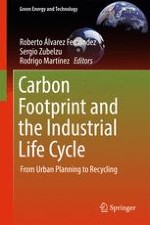2017 | OriginalPaper | Buchkapitel
17. Technologies for the Bio-conversion of GHGs into High Added Value Products: Current State and Future Prospects
verfasst von : Sara Cantera, Osvaldo D. Frutos, Juan Carlos López, Raquel Lebrero, Raúl Muñoz Torre
Erschienen in: Carbon Footprint and the Industrial Life Cycle
Aktivieren Sie unsere intelligente Suche, um passende Fachinhalte oder Patente zu finden.
Wählen Sie Textabschnitte aus um mit Künstlicher Intelligenz passenden Patente zu finden. powered by
Markieren Sie Textabschnitte, um KI-gestützt weitere passende Inhalte zu finden. powered by
